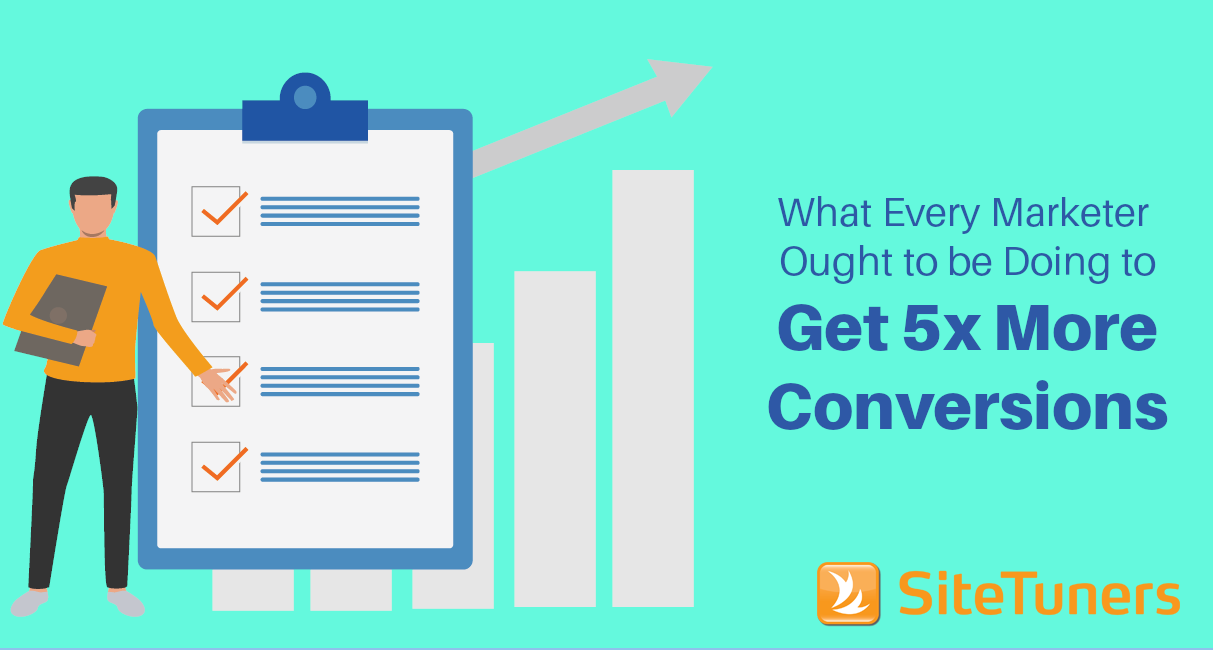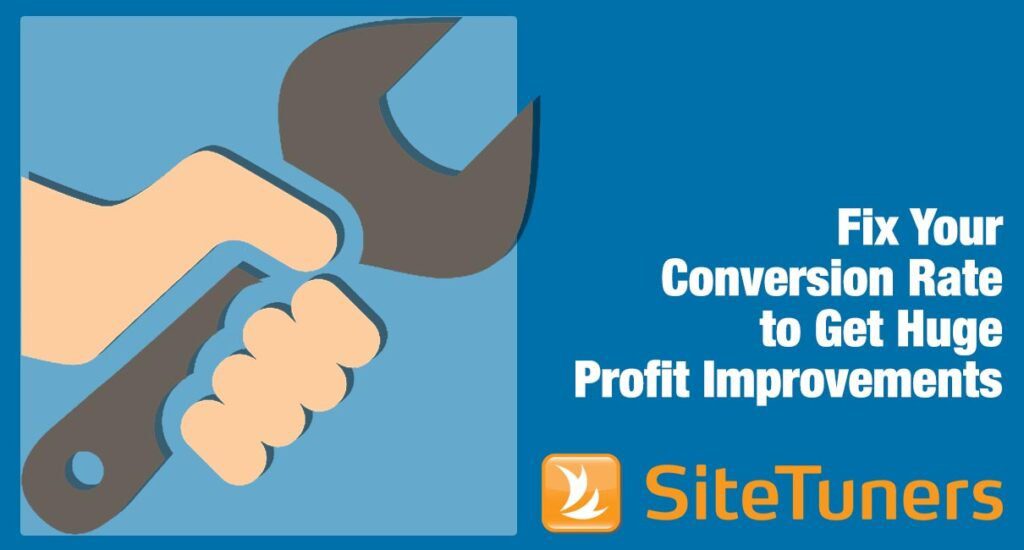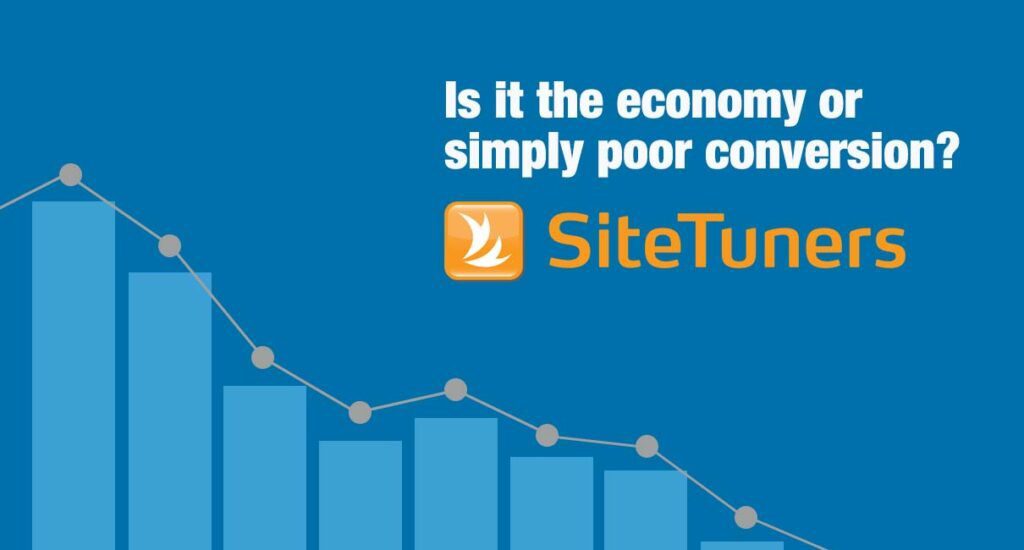 WordStream Chief Technology Officer Larry Kim calls it The Great LPO Fairy Tale. The classic A/B test that is, where after changing the font type, spacing, button color, image, or some other trivial part of a page, marketers report a boost of about 5% in conversions.
WordStream Chief Technology Officer Larry Kim calls it The Great LPO Fairy Tale. The classic A/B test that is, where after changing the font type, spacing, button color, image, or some other trivial part of a page, marketers report a boost of about 5% in conversions.
Marketers engaged in tactical testing have a delusion of success because they lose sight of the bigger picture. They don’t see that by making small changes, they’re also getting small lifts.
In a joint webinar with SiteTuners, Larry shared what a good conversion rate is – what marketers should be striving for- and what can be done to achieve it.
1. Aim for 3-5x increases, not 3-5%
WordStream’s data (from 10 billion dollars of ad spend analyzed) show the typical conversion rate distribution of pay-per-click (PPC) marketing landing pages across the entire ecosystem. On average …
- a median advertiser gets a 2.35% conversion rate for clicks
- the top 25% advertisers get 5.31% (or 2x the average)
- the top 10% advertisers get 11.45% (or 5x the average)
When the data was segmented into 250 different verticals, the result was consistent – the top 10% of advertisers within any vertical industry had 3x to 5x the conversion rate of the average.
2. Make fundamental changes
So how do you get up to 5x more the conversion rate your competitors are getting?
Change your offer
WordStream, a software company, used to have a free trial as their primary offer. However, they realized it was a bad idea because learning new software takes time and effort; people want to try something quickly and not invest time in some solutions. So, they changed the offer to an AdWords account report card – an audit of the prospect client’s AdWords’s strengths and weaknesses to give them a sense of where the problems are and how much money they can save if the problems were fixed.
WordStream invested about half a million dollars building the new tool, but the new offer converts 4x higher than the free trial. It’s an example of a big win that persisted over time.
To identify if you’ll benefit from changing your offer …
- Check if your conversion rate is average or below average
- Ask your customer. WordStream did this by adding a “What was it you were hoping for us to help you with today?” field in the contact us form. They found out that people didn’t want a free trial; they wanted to know how their PPC is going, so the new offer aligned more with the intent of the visitors.
Change the flow
You can also try changing the order of how you ask or present information to visitors.
Improving the quality of leads
With the old flow, the software was hidden behind the registration form. Then they tried putting the registration at the end rather than the beginning of the process. They figured this made more sense since software download takes only two minutes, but the installation process involves multiple steps. So, by the time the user gets to the end, they would have invested about 10 minutes, at which point they’d be asked for a registration code. The change resulted to a 3x improvement in conversion rates.
Too many form fills can be problematic in lead generation, however. Unlike in the eCommerce setting where a sale is a sale, in lead gen, it’s possible you’re boosting your conversion rate but getting lower quality leads.
WordStream made another fundamental change to the flow where they made registration optional. They’d pop up the registration every time the software is started, but if it’s started more than 10 times, registration becomes mandatory. This reduced the quantity of leads, but it dramatically increased the quality.
Eliminating bottlenecks
WordStream found that the biggest bottleneck in the AdWords Grader registration form was the part where users were asked to sign in to their Google AdWords account to link to WordStream because users may have forgotten their password.
This is where they lost a lot of people, so they split the form into three steps (rather than having all fields in one page) where they ask for the e-mail address on the first page. This way if users fail on the succeeding pages, WordStream will have captured the e-mail address and could remarket to the visitors via a drip e-mail campaign to try to get them to finish the process.
Create a few killer landing pages, not several mediocre ones
Larry notes that, in lead gen, one excellently designed landing page is enough to dramatically increase the revenue of your business. Having more landing pages with a lot of different offers has no inherent benefit.
3. For mobile, consider ditching your landing page
Mobile search results give users the option to tap the web site or the call button. Calls radically change the flow because …
- Calls bypass the landing page altogether (which is a very leaky step)
- The intent behind the call is much stronger than a click
- Calls convert 3X higher than clicks
Connecting with people the moment they have the pain as opposed to following up with them the next day makes a big difference. This why some companies have opened call centers and have changed their sales models and how they service the leads based on the effectiveness of mobile.
So consider removing your landing pages and forcing people to call instead. Larry advises popping up the call button (even if the click-to-call button isn’t chosen) when users tap on the headline of the ad in the search listings.
4. Remarket!
About 96% of people who visit a site don’t complete the actions marketers want them to take, and about 70% abandon their shopping cart without completing a purchase. These make remarketing a critical part of your arsenal, as it enables you to …
- turn abandoners to leads,
- increase branded searches,
- increase repeat visitor rates and engagement, and
- increase effectiveness of landing pages
Here are some remarketing venues:
- Facebook – upload customer lists or tag people who visited your website
- Twitter– has tailored audiences where you can track and target people who recently visited your website or specific people on a list
- Google Display Network– a network of 2 million websites so you can be present when people are off your site and doing other things
Larry stresses that remarketing aggressively is key as conversion rates increase over time, with more ad impressions. Sure, the more people see an ad, the less likely they are to click on it, so the click-through rate goes down. However, if a user, who has seen the ad 5 to 7 times, clicks on it, the chances of them converting are very high. In PPC marketing, you don’t pay for the impression unless people click on the ad, so you should be very aggressive in chasing people all over the internet.
Focusing on small trivial things makes you lose sight of bigger gains that can be had. So instead of devoting your resources on tactical testing, look at making radical changes to your pages or your business model that can move the needle a lot more.
Learn more reasons tactical testing isn’t synonymous to conversion rate optimization. Watch “The A/B Testing Myth: How to Really Get More Conversions” with Tim Ash and Larry Kim.


